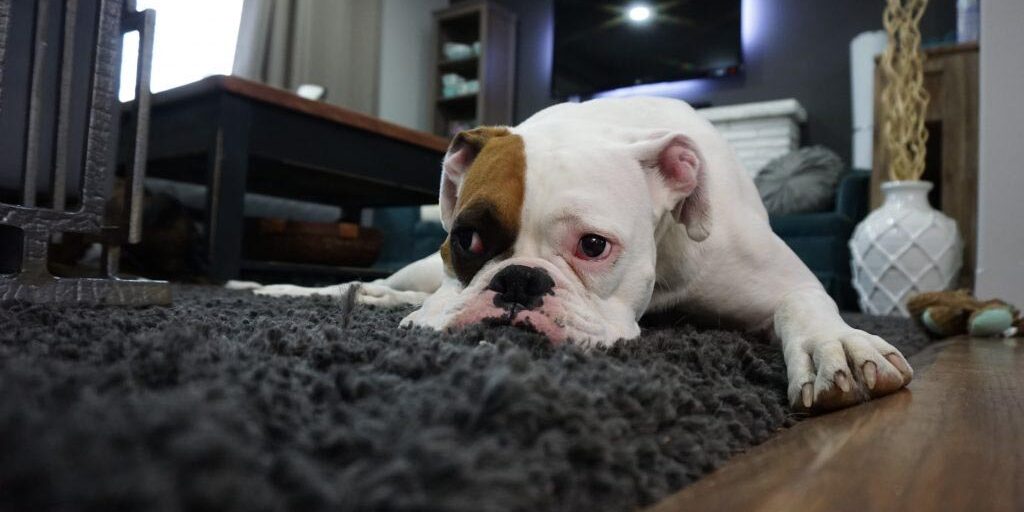The cooler months usually make people think about underfloor heating when they are renovating an existing or building a new home. It’s something that needs planning, and most people are amazed at how inexpensive it is to install and operate.
The short version is that underfloor heating can be installed practically anywhere and under a variety coverings and floor types.
The team at Designer Bathrooms Plus are proud sellers of the Thermonet product from Thermogroup and they have a solution for your Bathroom, Living room, Kitchen & laundry, Bedrooms & offices, Outdoor areas, Tiles and stone floors, Timber floors, Vinyl floors, Carpet floors or Polished concrete floors. Underfloor heating is popular in the Byron hinterland where it gets chilly overnight so chat to an expert now before your renovation or new home build commences.
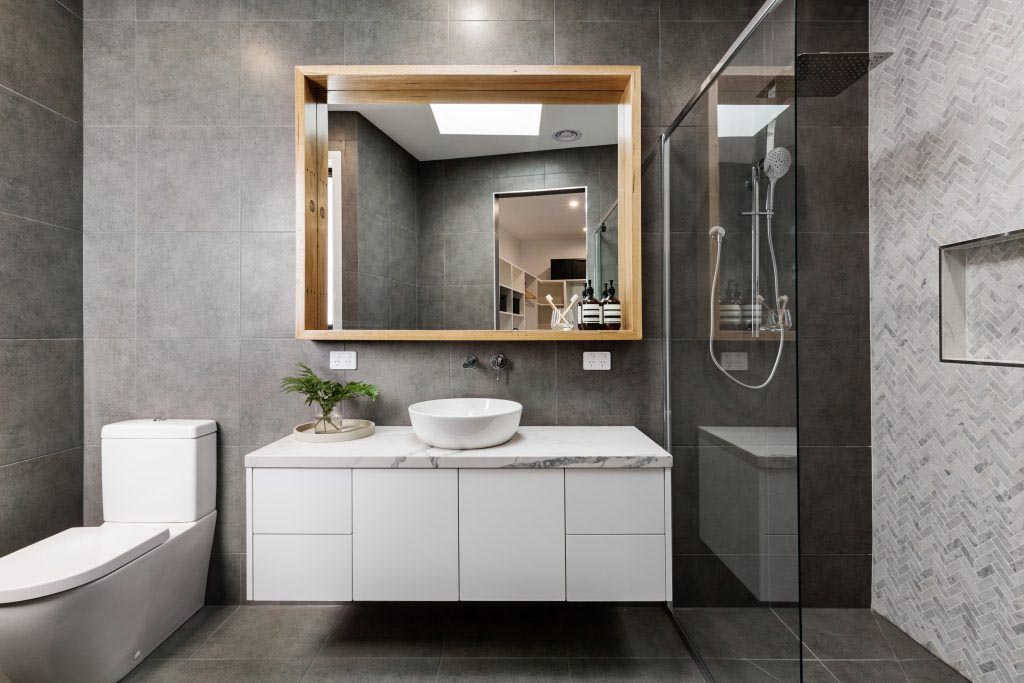
Bathroom
The bathroom is undoubtedly the most common room for Underfloor Heating. Why? Because tiles are one of the coldest floor finishes.
In any Underfloor Heating installation, you need at least 80% floor coverage with heating to make Underfloor Heating the primary heat source. In a bathroom, you quickly begin to lose that coverage when you take out the areas where the heating won’t be installed such as the toilet, bath etc. As a result, to get the best heating performance you want to be aiming for 150W/m² of underfloor heating in areas like Tweed Heads and the Gold Coast or 200W/m2 in colder areas of the Byron or Gold Coast Hinterland.
The most common type of install we do is using the Thermonet Mat. This is suitable for either above or below the screed installations and provides a fast install with consistent cable spacing across the room.
Prices vary depending on the type of thermostat chosen to install on the wall and the size of the bathroom, but prices start from $600 if you had 5m2 of under floor heating installed and this would cost around $2.50 per day if you ran it for 8 hours based on 34c per kilowatt.
Underfloor heating will not heat the entire bathroom but gee it is nice under foot and make sure you install it under the tiles in the shower area that gets wet because if underfloor heating is used 8-10 hours per day in the shower you will experience less mold issues in the tile grout and silicon around the floor.
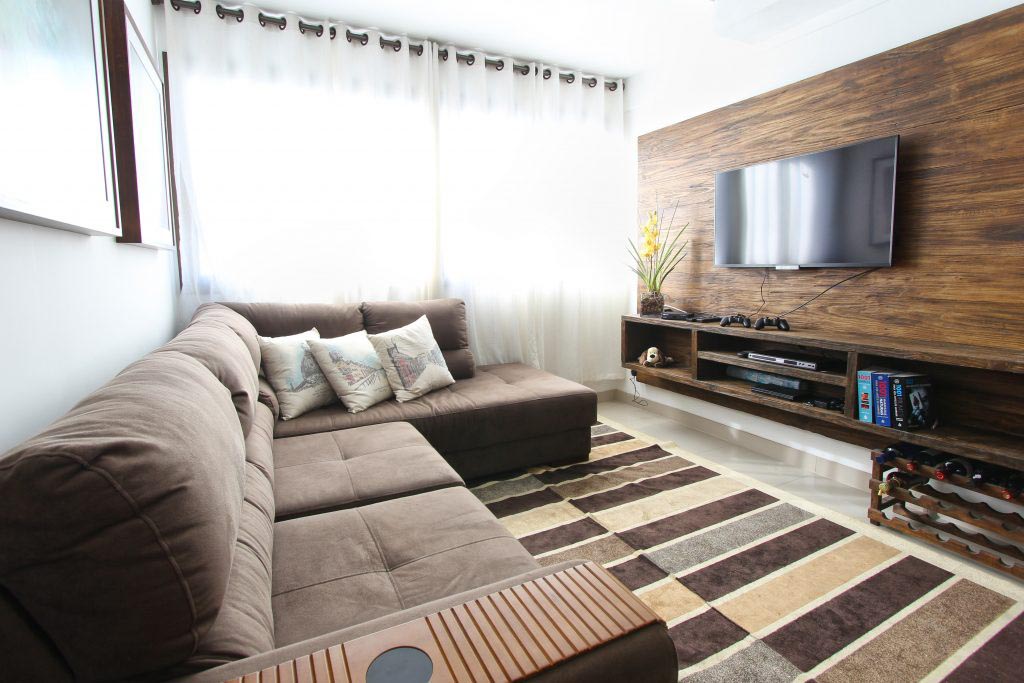
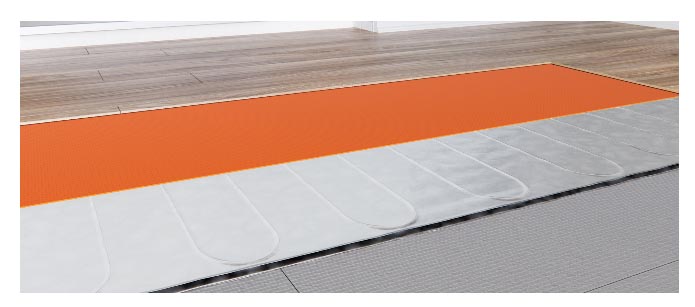
Living Room
Underfloor Heating is the best way to heat any floor space, as the heating is even and consistent throughout the room so what better area to have this in than your living area.
So, what is the best Underfloor Heating for your living room? On this one we are going to have to reference the different systems to fully answer this question, however, unlike the bathrooms, we are not aiming for such a high wattage. The best option is to aim for 150W/m² for these areas as you have a larger heat area and typically don’t require such an instant heat source as a bathroom.
You may also want to consider zoning your living areas with different thermostats so that you can control the different areas such as living, lounge, dining etc.
If you are after tiles then check the same bathroom system is used, if you are having timber, carpet, vinyl or a polished concrete floor finish talk to the experts at Designer Bathrooms Plus.
Keeping the wattage at 150W/m² rather than 200W/m² will help to reduce your electricity draw and running costs, and you will have the best possible system for your living area. The most common type we supply for carpets or timber floors is the Thermogroup Electric foil heating system.
Bring the luxury feeling of underfloor heating and the simplicity of an electric system to timber and carpet floors with the Thermofoil PRO which is the most advanced electric under floor heating foil available today. Innovations such as our exposed cable loops and continuous earth protection ensure an easy installation and total safety.
Kitchen & Laundry
The kitchen is often called the heart of the home, so what’s the best electric underfloor heating system for your kitchen and laundry?
Similar to living rooms, we are going to need to look at the different floor finishes again and we are also typically aiming for a wattage of 150W/m2. We have put the kitchen and laundry together as we see a lot of homes with the laundry coming off the kitchen and a lot of people run it on the same zone. This isn’t always the case, and possibly you may want to consider a 200W/m² system as the best system for the laundry where you have a door directly to the outside, as you may lose more heat in this room.
If your kitchen and laundry include one of the following floor finishes, then check in with an expert from Designer Bathrooms Plus for the best Floor Heating system for your home.
Floor type: tiles, timber, vinyl or a polished concrete floor finish.
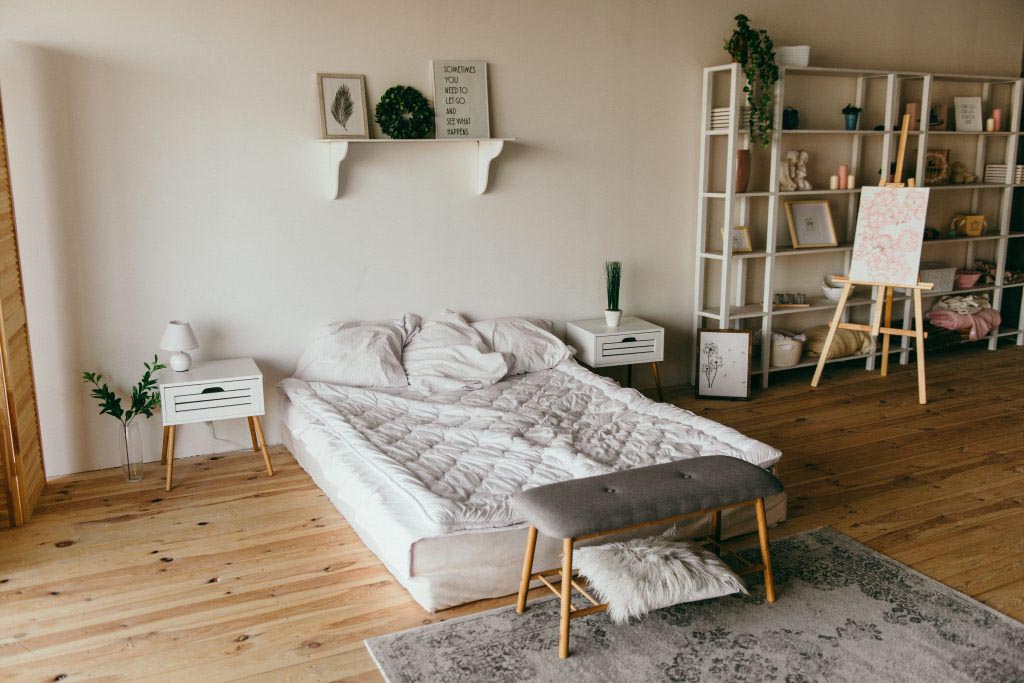
Bedrooms and Office Spaces
Typically, bedrooms are carpet, not always but mostly, so in this case, with a loose lay carpet, we will use the Thermofoil system. Thermofoil is the best Underfloor Heating for the bedroom with carpet as it is installed between the underlay and carpet, thereby efficiently heating the room whilst minimizing downward heat loss.
Your study could have several different floor finishes to the bedroom so to work out the best Underfloor Heating system speak with an expert from Designer Bathrooms Plus. Again, you are ideally aiming for 150w/m2 for your study heating. Just one point on if you have carpet in your study and a wheelie office chair, Thermofoil will not be a suitable system to use. The pressure from the wheels running over the cable will cause potential cable damage in the future.
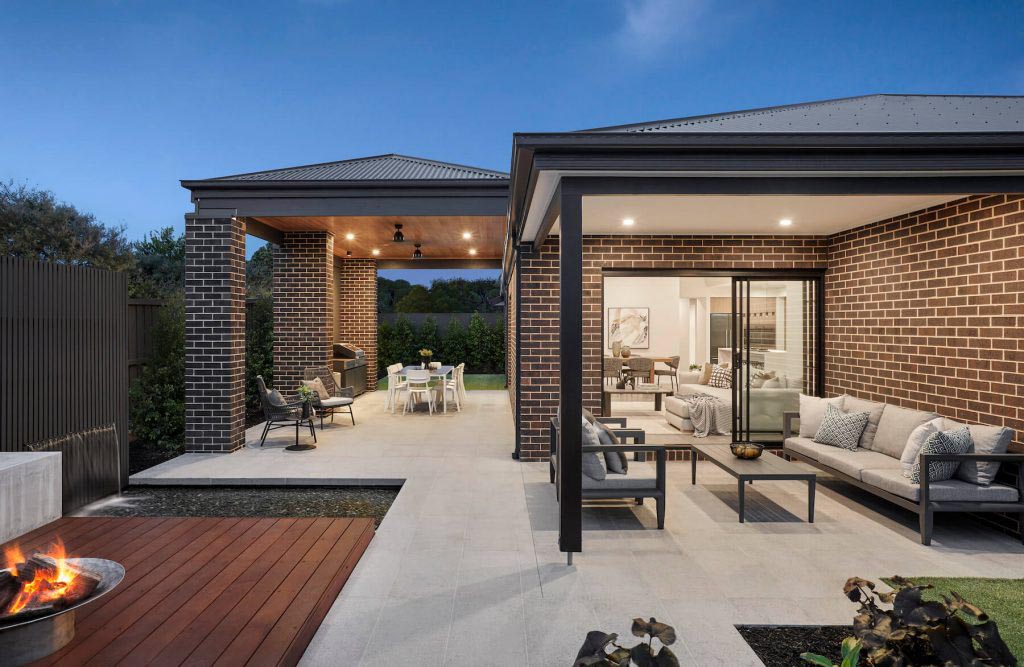
Outdoor Areas
This is one that you may not have considered but you would be surprised at how common Underfloor Heating is becoming in outdoor areas. Ok then so what’s the best Underfloor Heating system for an outdoor area?
There are two common options here:
Firstly a concrete slab that is tiled as the floor finish. In this case, use either Thermonet Mat or Thermoscreed Loose Wire system aiming for 200W/m2 to provide a higher heat source.
Alternatively, you may be having the exposed concrete slab as the floor finish. In this case the best floor heating option for your outdoor area is to use the Inslab system. This will take longer to heat up however it will heat the entire slab in time and provide a good heat bank.
These are the two best Underfloor Heating systems for your outdoor area. If you are wondering why heat an outdoor area, well consider that it’s very common to entertain in your outdoor area on a winters evening and generally you are sitting a lot of the time, and therefore need to keep warm, and what better way than with heat gently rising from the floor. Also, if your outdoor area is partly closed in or has pull down blinds you will be able to reduce the amount of heat loss and enjoy the comfort and warmth of Underfloor Heating with your friends & family.
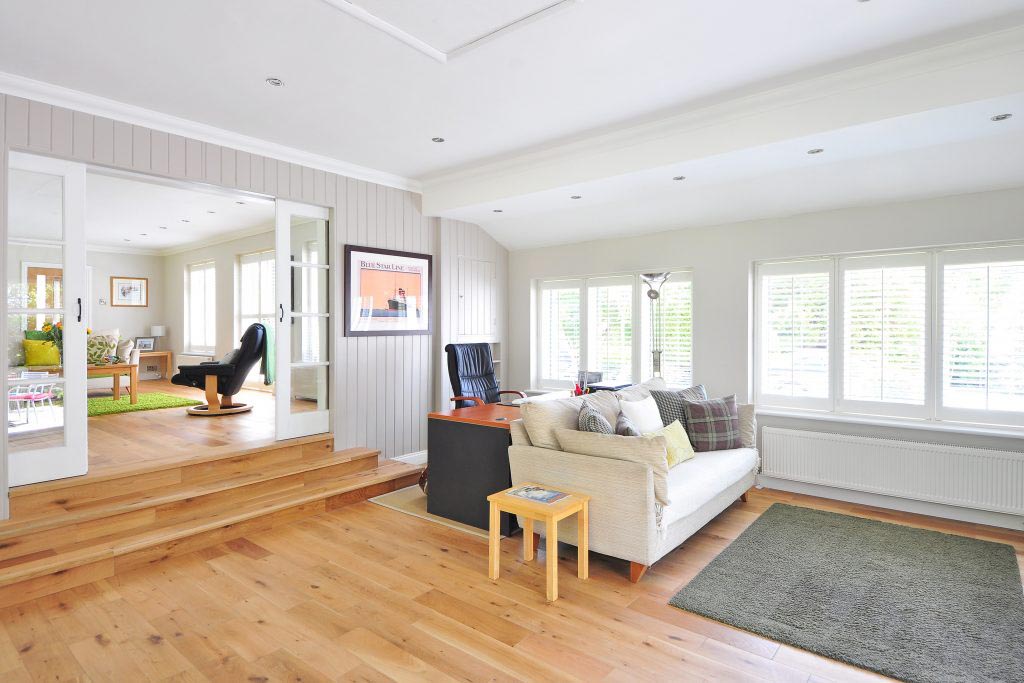
Entire Home
Well then is there a best Underfloor Heating system if I want to heat my entire home? There are two answers to this, firstly you could go through and use the best system for each area based on the recommendations above and the different floor finishes.
Or, you could use an Inslab system throughout the home regardless of the different floor finishes. An Inslab system is designed to heat your entire concrete slab, and while this does take longer to heat up, it builds a heat bank which makes it an effective heating system. You can find out more about our Thermoslab system and how it may be the best Underfloor Heating option for your entire home here.
Well, that’s an overview on the different rooms in the home and the best heating system to use and now we will go into the best Underfloor Heating system for the different floor finishes.

Tiles and Stone floors
Tiles and stone floors are the most common floor finish for Underfloor Heating as they are such a cold floor finish. So what is the best Underfloor Heating for use with your tiles or stone?
As mentioned, in bathrooms we recommend using 200W/m² which can be achieved by using our Thermonet 200W mats, Thermowire loose wire or Thermoscreed loose wire cable.
For tiles elsewhere in the home, we would recommend using 150W/m² and Thermonet 150W mats or Thermowire Loose Wire would be the best systems, unless it’s outdoors then we would recommend 200W/m2 as metioned above.
For stone, we have two options. Firstly if it’s a standard 10-12mm thick stone then 150W/m2 will be fine, as long as it’s not in the bathroom. Anything thicker than that we would recommend using the 200W/m² to provide more heat to get through the thicker floor finish. This is not mandatory, a 150W system will still heat it up but we are talking about the best Underfloor Heating option for your stone, right.
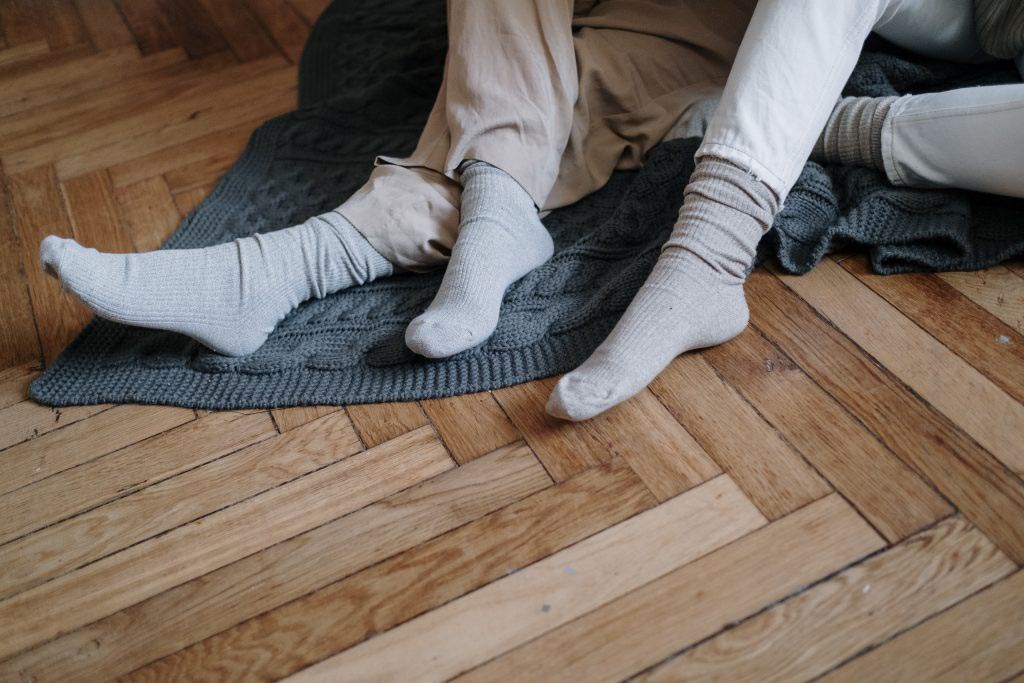
Timber Floors
There are two different installation methods for your timber floor and this affects which is the best Underfloor Heating system to use. For floating timber floors, the best Underfloor Heating system is our Thermofoil system. Thermofoil is like an electric foil blanket that you install onto an underlay, cover with an overlay and then lay your floating timber floor on top of that. The advantage of this is that you don’t have to get any wet trade involved in the floor build-up. The other option is when you have a glued timber floor. In this application, the best Underfloor Heating system would be a 150W/m² system, if this is a larger room then a mat system might be best, and then the system must be covered with a 10mm of self-levelling before gluing down your timber floor.
Always check with the flooring manufacturer that the timber is suitable to be installed over Underfloor Heating.
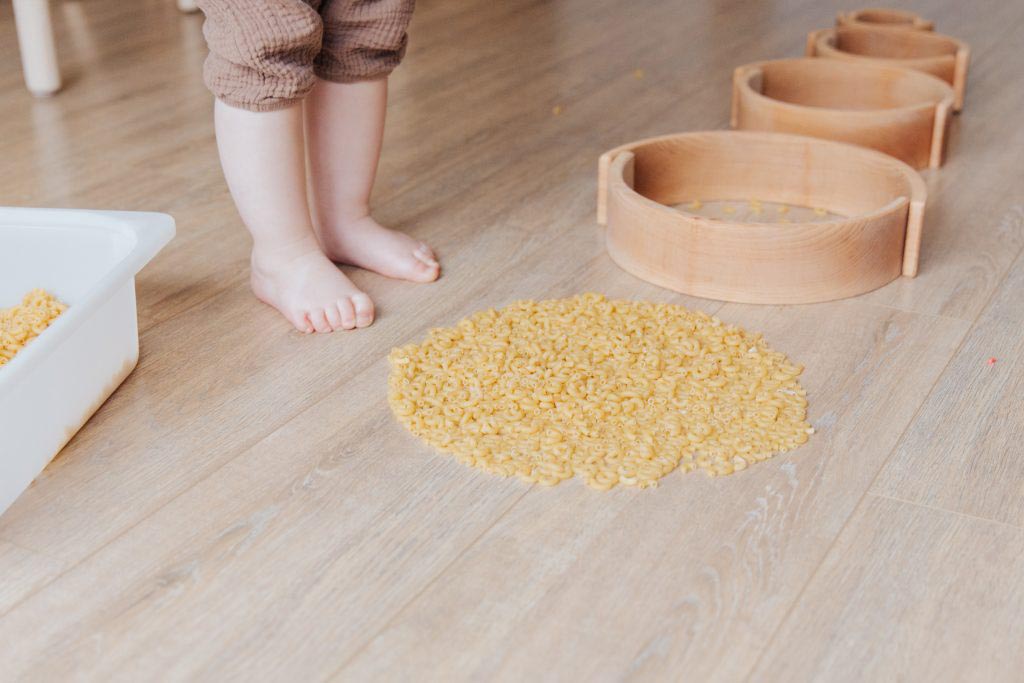
Vinyl Floors
The best Underfloor Heating system for Vinyl floors is essentially the same as timber floors. It will depend on if your vinyl is glued down or a floating vinyl plank. If it’s a glued vinyl, then you will need to use the 150W/m² system and cover it with a self levelling compound. If it’s a floating vinyl plank you could use the Thermofoil system.
Always check with the flooring manufacturer that the vinyl is suitable to be installed over Underfloor Heating.
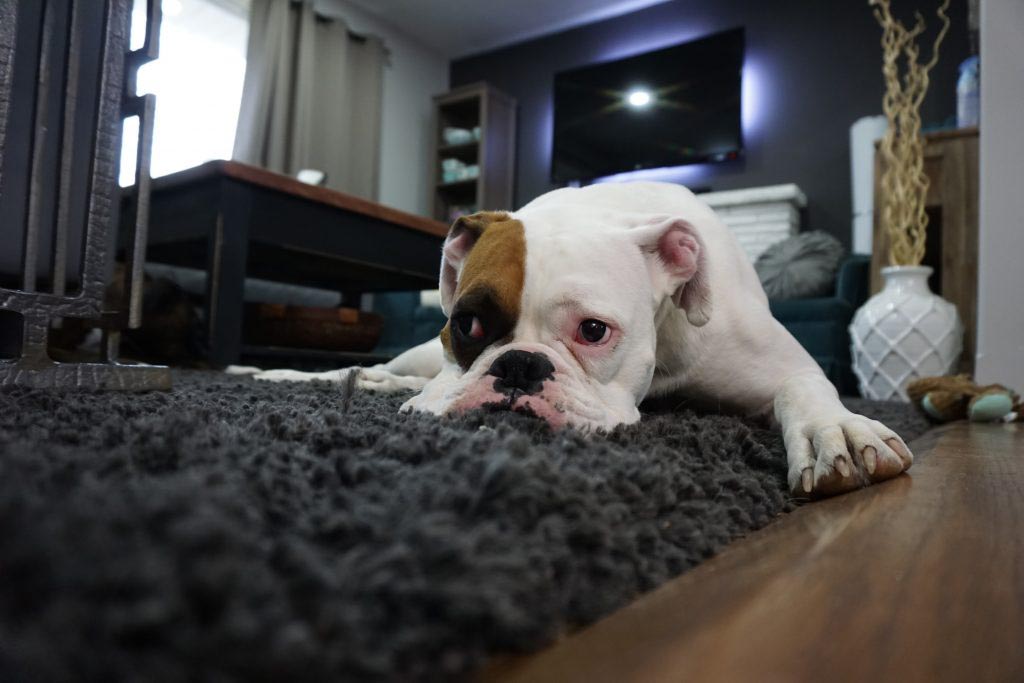
Carpet Floors
A lot of people don’t realise that you can bring the luxury and comfort of Underfloor Heating to carpet floors. The best Underfloor Heating system for carpet is the Thermofoil system. The Thermofoil system is installed directly on top of your carpet underlay and then covered with an overlay before the carpet is installed over the top.
This is the best way to heat carpet as the heating is directly below the carpet and the underlay acts as an insulator to prevent downward heat loss. The overlay provides protection for the system by eliminating any abrasion against the carpet.
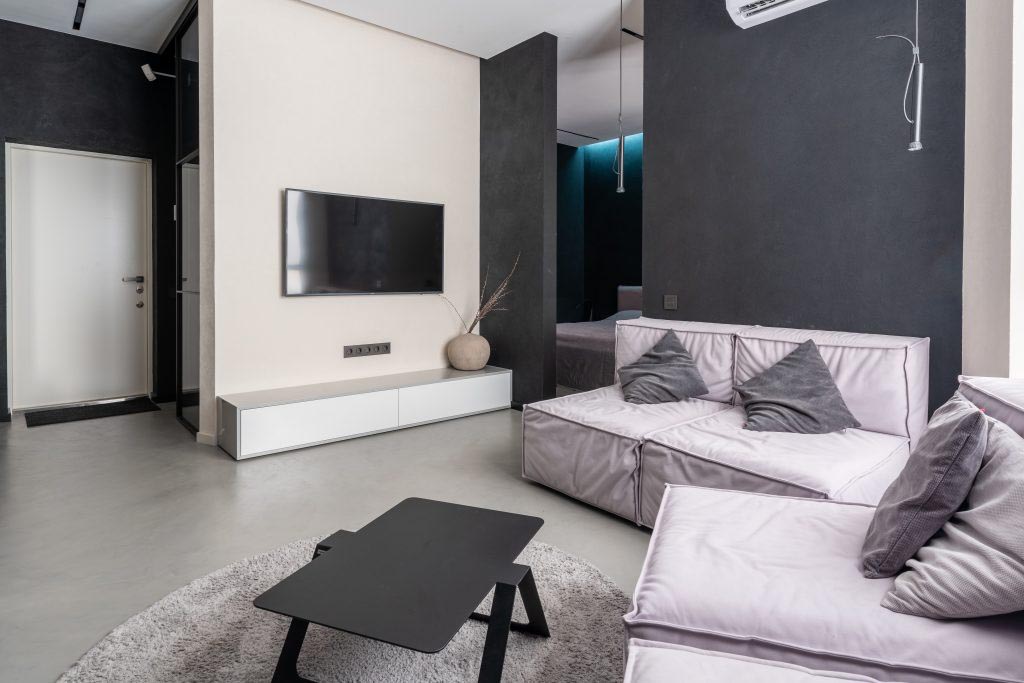
Polished Concrete
The final floor finish that we would like to discuss in our search for the best Underfloor Heating system is polished concrete. There are two main ways that a polished concrete floor is achieved which may affect the system used.
Firstly, in an application where the main slab is polished to create the finished floor finish the best system to use is the Thermoslab which is installed in the slab before the slab is poured. An in-slab system will take around 1-2 days to heat up, so it’s a much slower heat-up time than our systems directly below the substrate but the slab will hold the heat for longer.
The other method for polished concrete is to pour a second slab on top of the original slab which is then polished to create the polished floor finish. In this case the best system will depend on the thickness of the second slab. It if is 50mm or less then the Thermoscreed system is the best option with a desired output of 200Wm². If the slab is thicker than 50mm we would recommend that you use the Thermoslab system to stick onto your first slab to ensure that you have sufficient heat to heat up the thickness of the slab.
Polished concrete is becoming a more common floor finish and it would typically be a very cold floor, so you certainly want to use the best system to ensure that your floor not only looks amazing but feels amazing when you walk across the room.
Summary
Well, that wraps up our answer to the question of where can I use an Underfloor Heating system?
We have looked at it both from the room and the floor finish point of view, aiming to cover the most common floors and rooms that we get requests for.
Underfloor heating is something you should consider for your next home renovation or new build as it adds valued to your property and feels great under foot. Even if you only get 2-3 months a year of chilly weather it will also reduce mold in your wet areas if the underfloor system is used correctly.
We specialize in Byron, Tweed Heads and Gold Coast underfloor heating solutions, so talk to an expert at Designer Bathrooms Plus. Phone 07 5513 0466 or email [email protected]

















